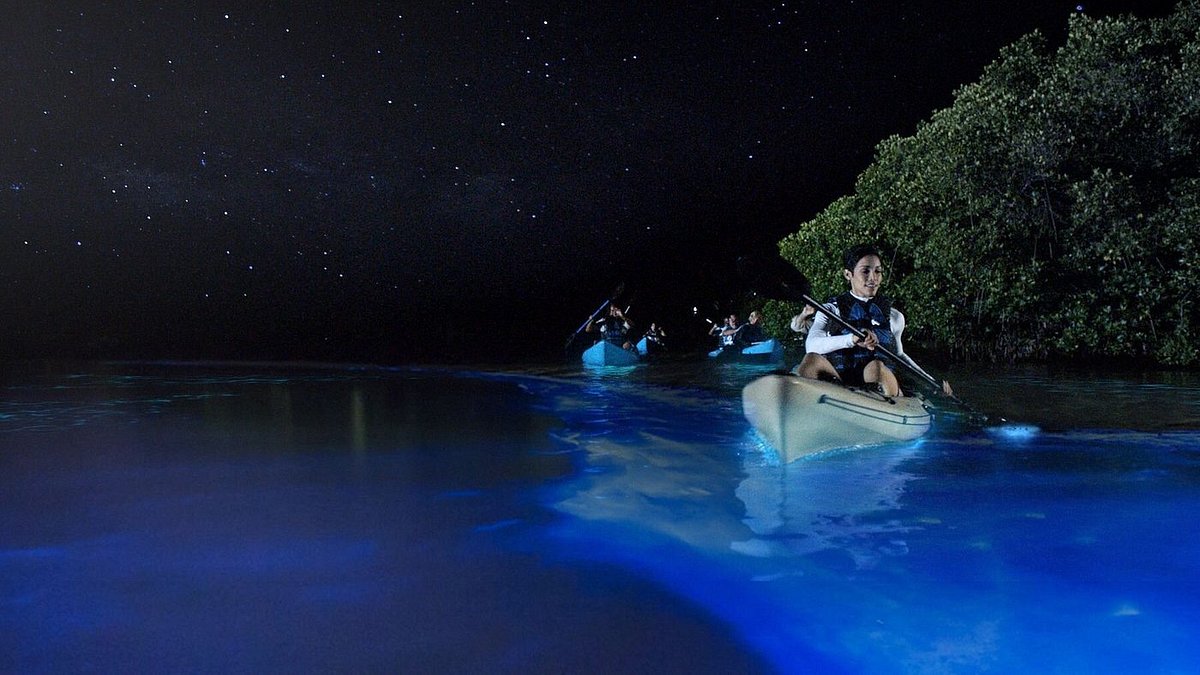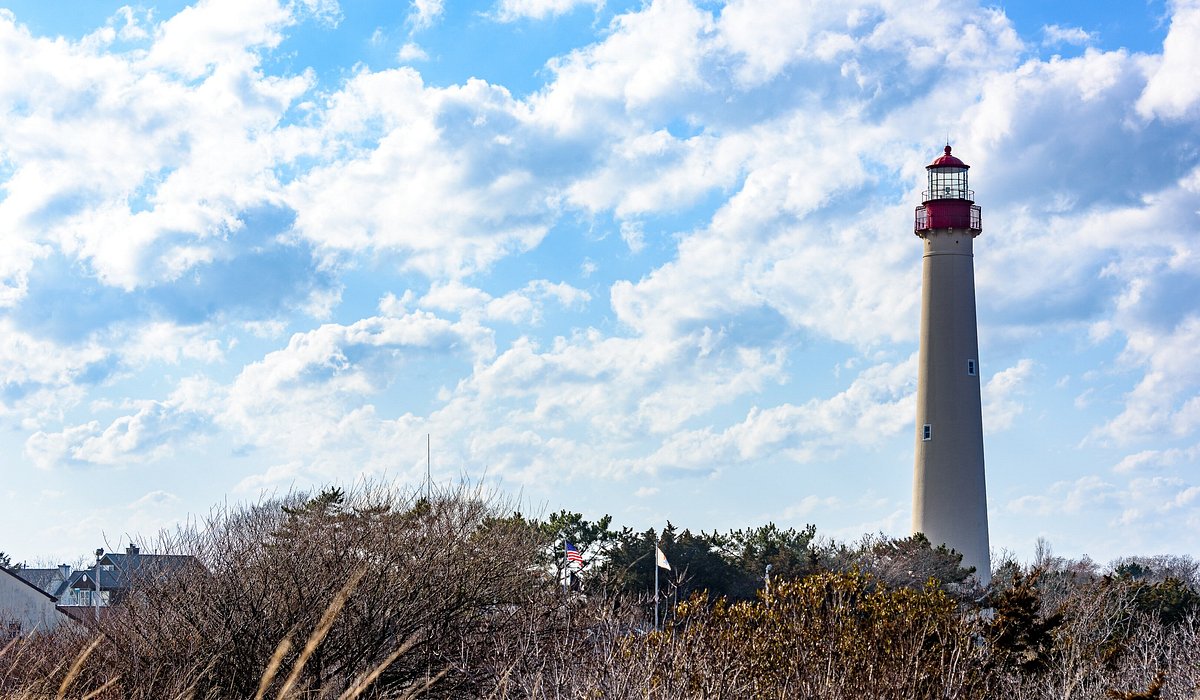Here’s how to experience the island’s glowing phenomenon
We can thank the phytoplankton species Pyrodinium bahamense for putting on the planet’s greatest underwater light show, a natural phenomenon known as bioluminescence. These tiny, microscopic critters emit a bluish-green neon glow whenever they are disturbed, including, for example, from a wave, boat, or kayak paddle. There must be an especially high concentration of these phytoplankton in a specific body of water for it to qualify as a bioluminescent bay; there are only five on Earth. Three of those are in Puerto Rico.
No wonder, then, that the island is one of the top destinations in the world for experiencing this glowing natural wonder with a total of three bio bays (the other two are located in Jamaica and Vietnam). It’s an honor that Puerto Rico’s Department of Natural Resources takes seriously, requiring visitors to obtain a permit (usually via a tour operator) to venture into these waters. Here’s a rundown of what you need to know.
Laguna Grande, Fajardo
Laguna Grande is arguably the most-visited bioluminescent bay in Puerto Rico—not because its waters are more radiant, but owing more to its convenient location in Fajardo, which is a 75-minute drive from bustling San Juan. Though Laguna Grande is considered a bioluminescent “bay” it’s more of a long and narrow bioluminescent canal. It’s inside the Reserva Natural Cabezas de San Juan, a natural reserve that, by day, boasts multiple trails, a lighthouse, mangrove forest, rocky beaches, coral reefs, and diverse wildlife, including iguanas, mongoose, and whales. Inside the reserve, Playa Seven Seas is one of the most pristine beaches in Puerto Rico with white sand, calm turquoise waters, and several palm and almond trees. An even more secluded beach, Playa Escondida (or “hidden beach”) is a 25-minute hike away.
Tip: Many Laguna Grande tours offer pick-up and drop-off in San Juan for folks who want to avoid the hassle of renting a car or booking accommodation in Fajardo. Just keep in mind you’ll be spending roughly three hours (roundtrip) in the vehicle.
What’s nearby: The bioluminescent bay is what lures more travelers to Fajardo, but there’s so much more to do and see on the eastern side of the island, including boat charters to Cayo Icacos and visiting El Yunque, the only tropical rainforest in the U.S. National Forest System.
Where to stay and eat: The 125-room Fajardo Inn Resort is a fitting, eco-friendly base for exploring the eastern side of the island, renowned for its natural beauty. There are two restaurants on site, but the local Fajardo dining scene is worth exploring, too. Two of my favorites are La Estacion, known for marrying American barbecue techniques with Caribbean ingredients on an open wood-smoke fire, and the waterfront Cinco Nudos, which whips up fresh seafood dishes and tropical drinks at Marina Puerto Chico.
Mosquito Bay, Vieques

Six miles off the southeastern coast of mainland Puerto Rico, Vieques Island abounds with white- and black-sand beaches, immaculate coral reefs, wild horses, and the brightest bioluminescent bay on the planet. Per the Guinness Book of World Records, Mosquito Bay had more than 700,000 glowing phytoplankton per gallon of water, a concentration that has roughly doubled to an average of 1 million to 2.1 million per gallon since Hurricane María hit in 2017. It also helps that local agencies have declared the area surrounding Mosquito Bay a natural reserve, keeping the night skies free of any light pollution allowing the waters and stars to twinkle especially bright.
Though you can reach Vieques either by plane or ferry, the latter is much more affordable. Flights, which depart from both Luis Muñoz Marin International Airport and Island Grande airport in San Juan, take roughly 25 minutes. The ferries depart from the southeastern city of Ceiba, near Fajardo, on a 45-minute journey to Vieques multiple times a day.
Tip: Be sure to book accommodations on Vieques if you are planning to take a night tour of Mosquito Bay. Most tours finish after the last ferry departs to Ceiba.
Where to stay and eat: Vieques isn’t a very large place—only 21 miles wide and five miles long—but the quaint town of Esperanza is the center of the action. Esperanza’s oceanfront esplanade, called el malecón, is where many of the hotels and restaurants are located. One such property is El Blok, a modern hotel with sleek, curvilinear lines, waterfront views of the Caribbean Sea, and a rooftop primed for watching the sunset. If you can budget it, its on-site restaurant Placita is worth the price, serving modern takes on Puerto Rican cuisine using only the freshest seafood and ingredients. For a more out-of-the-box meal, Tin Box is a laidback open-air eatery perched in the lush treetops with a menu highlighting both sushi and barbecue.
Lajas, Lajas Valley

Part of Lajas’ charm is what it lacks: high rises, chain hotels, big box stores. This seaside fishing village on Puerto Rico’s southwestern coast is quaint and lowkey, and its bioluminescent bay, La Parguera, is the only one in Puerto Rico that allows visitors to actually swim in it. Though the concentration of the phosphorescent phytoplankton isn’t as high as in Mosquito Bay or Laguna Grande, immersing in La Parguera’s waters and creating glowing waves with each stroke and kick is magical. Its remote location also guarantees less crowds than Laguna Grande and Mosquito Bay.
Tip: You can hire a water taxi to pick you up and drop you off at Cayo Caracoles or Isla Mata La Gata for a day of snorkeling and lounging in the shallows. Some companies even allow you to rent a skiff. Just keep in mind that you need to have it returned before dark.
What’s nearby: The bioluminescent bay is where it’s at after dark. But do not fret because there is plenty to do in Lajas once the sun comes up. The main attraction is the surrounding flora and fauna, and the best way to experience it is by boat and going island hopping to Cayo Caracoles and Mata La Gata. Both make for great snorkeling spots, and chances are you’ll encounter schools of fish, dolphins, manatees, and sea turtles. It would be a travesty for anyone who is scuba certified to miss out on diving at La Pared (or “The Wall”) to get up close to schools of fish, anemones, and tropical corals.
Where to stay and eat: There’s no shortage of hotels in town, including Copamarina Beach Resort & Spa that’s set on a private beach with oceanfront views and comfortable rooms. The hotel has an onsite restaurant with all-day dining. In town you can saunter down the waterfront boardwalk, or malécon, which is a lively nucleus with vendors, eateries, bars, and shops. Fuel up at the trendy Brújula café at the Parguera Plaza Hotel for tapas, brunch, lunch, and dinner with a diverse menu offering seafood dishes, barbecue, and vegan options, too.




